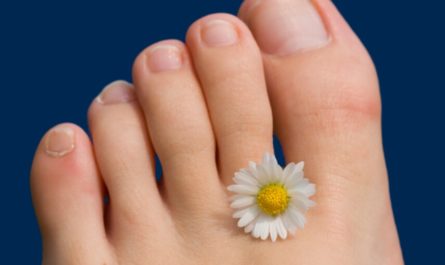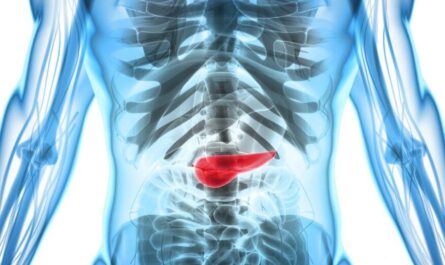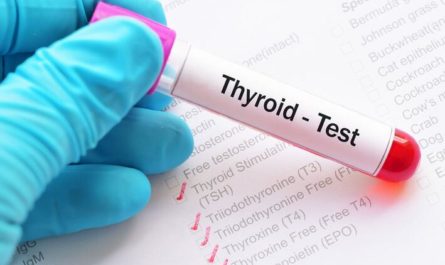Heart rate, also known as pulse rate, refers to the number of heartbeats per minute (bpm). The heart can pump oxygen-rich blood to the body’s tissues through regular contractions. The heart rate varies due to many factors. It is usually at its lowest during sleep and its highest during periods of exercise. Age, gender, or physical condition can also cause different heart rates.
Heart rate is the primary indicator of overall heart health and fitness. It is essential for those who love fitness of their heart. To take full advantage of workouts, it is best to keep your heart rate between 60% and 85% of your maximum heart rate, called aerobic heart rate.
However, how to track the heart rate when working out? How to know whether the heart rate is in the normal range? This article provides you with various heart rate charts that can help determine the normal resting and maximum heart rates.
5 Heart Rate Charts Help Monitor Your Pulse Rate
1. Normal Heart Rate Chart When Resting By age
Resting heart rate refers to the number of heartbeats per minute when your body is calm or at complete rest. It represents the work that your heart must do when your body is not active. This indicator can well measure the health level of your heart.
The best time to measure your resting heart rate is before any activity in the early morning. Generally speaking, fewer heartbeats per minute and a lower resting heart rate indicate a better health level of the heart. This means that the heart does not have to work hard to pump blood throughout the body.
| Age | 18-25 years | 26-35 years | 36-45 years | 46-55 years | 56-65 years | 65+years |
|---|---|---|---|---|---|---|
| Well-conditioned Athlete | 49-55 | 49-54 | 50-56 | 50-57 | 51-56 | 50-55 |
| Good | 56-65 | 55-65 | 57-66 | 58-67 | 57-67 | 56-65 |
| Normal | 70-73 | 71-74 | 71-75 | 72-76 | 72-75 | 70-73 |
| Bad | 82+ | 82+ | 83+ | 84+ | 82+ | 80+ |
2. The Rhythm of Rest: Resting Heart Rate
Your resting heart rate is the number of times your heart beats per minute when you’re at complete rest, free from physical exertion or emotional stress. It’s typically measured first thing in the morning before you get out of bed or engage in any physical activity.
| Age | Heart Rate |
|---|---|
| Newborn(0-3months) | 100-150 bpm |
| Infants(3-12months) | 90-150 bpm |
| Childeren(ages 1-10) | 70-130 bpm |
| Childeren(Over ages 10) | 60-90 bpm |
Factors that can influence your resting heart rate include:
- Age: As you get older, your resting heart rate tends to increase slightly due to natural physiological changes.
- Fitness Level: Individuals who engage in regular aerobic exercise often have lower resting heart rates, as their hearts have become more efficient at pumping blood.
- Body Size: Generally, larger individuals have higher resting heart rates due to the increased demand for oxygen and nutrients.
- Stress and Anxiety: Elevated stress and anxiety levels can increase your resting heart rate, as your body prepares for a “fight or flight” response.
- Medications: Certain medications, such as beta-blockers, can lower your resting heart rate by reducing the workload on your heart.
Monitoring your resting heart rate can provide valuable insights into your overall health and fitness levels. A consistently low resting heart rate may indicate good cardiovascular fitness, while a consistently high resting heart rate could be a sign of underlying health issues or poor fitness.
3. Maximum Heart Rate Chart
Maximum heart rate refers to the maximum number of heartbeats in one minute during strenuous exercise. It can be used to measure training intensity and fitness level.
You can measure your maximum heart rate to assess whether physical exercise is sufficient to increase your heart rate. And to ensure that the heart rate remains within an acceptable range during exercise.
The maximum heart rate can be measured after completing the exercise test. It can also be determined by standard formulas based on age and gender. The common formula for calculating the maximum heart rate is as follows:
- Maximum HR for men = 220-your current age
- Maximum HR for women = 226-your current age
For example, the maximum heart rate of a 32-year-old man is 220-32 = 188 beats per minute.
| Age | Maximum Heart Rate For Men | Maximum Heart Rate For Women |
|---|---|---|
| 20 years | 200 bpm | 206 bpm |
| 25 years | 195 bpm | 201 bpm |
| 30 years | 190 bpm | 196 bpm |
| 35 years | 185 bpm | 191 bpm |
| 40 years | 180 bpm | 186 bpm |
| 45 years | 175 bpm | 181 bpm |
| 50 years | 170 bpm | 176 bpm |
| 55 years | 165 bpm | 171 bpm |
| 60 years | 160 bpm | 166 bpm |
| 65 years | 155 bpm | 161 bpm |
| 70 years | 150 bpm | 156 bpm |
4. The Rhythm of Movement: Exercise Heart Rate
Your exercise heart rate, also known as your training heart rate, is the number of times your heart beats per minute during physical activity. As you exercise, your heart rate increases to meet the increased demand for oxygen and nutrients by your working muscles.
The intensity of your exercise will determine how high your heart rate rises. Generally, the more intense the exercise, the higher your heart rate will be. However, it’s important to note that your exercise heart rate should remain within a safe and effective range, known as your target heart rate zone.
5. The Sweet Spot: Target Heart Rate Zone
Your target heart rate zone is the range of heart rates that you should aim for during exercise to achieve optimal cardiovascular benefits. This range is typically calculated as a percentage of your maximum heart rate, which is the highest number of times your heart can beat per minute during intense physical activity.
The formula for estimating your maximum heart rate is:
Maximum Heart Rate = 220 – Age
For example, if you’re 35 years old, your estimated maximum heart rate would be 220 – 35 = 185 bpm.
Once you’ve determined your maximum heart rate, you can calculate your target heart rate zone using the following guidelines:
- For moderate-intensity exercise (e.g., brisk walking, or light cycling), aim for a heart rate between 64% and 76% of your maximum heart rate.
- For vigorous-intensity exercise (e.g., running, swimming laps, high-intensity interval training), aim for a heart rate between 77% and 93% of your maximum heart rate.
Here’s a handy chart that shows the target heart rate zones for different age groups:
| Age | Target Heart Rate Zone (50-85%) | Average Maximum Heart Rate (100%) |
|---|---|---|
| 20 | 100-170 bpm | 200 bpm |
| 30 | 95-162 bpm | 190 bpm |
| 35 | 93-157 bpm | 185 bpm |
| 40 | 90-153 bpm | 180 bpm |
| 45 | 88-149 bpm | 175 bpm |
| 50 | 85-145 bpm | 170 bpm |
| 55 | 83-140 bpm | 165 bpm |
| 60 | 80-136 bpm | 160 bpm |
| 65 | 78-132 bpm | 155 bpm |
| 70 | 75-128 bpm | 150 bpm |
| 75 | 73-123 bpm | 145 bpm |
| 80 | 70-119 bpm | 140 bpm |
| 85 | 68-113 bpm | 135 bpm |
| 90 | 65-111 bpm | 130 bpm |
It’s important to note that these are general guidelines, and your target heart rate zone may vary based on factors such as fitness level, medical conditions, and medications. If you have any concerns or underlying health issues, it’s always best to consult with a healthcare professional before starting an exercise program.
Benefits of Exercising in Your Target Heart Rate Zone
Exercising within your target heart rate zone offers numerous benefits for your overall health and fitness:
1. Improved Cardiovascular Health
Working within your target heart rate zone helps strengthen your heart muscle, improve blood circulation, and reduce the risk of heart disease. Regular exercise at the appropriate intensity level can lower blood pressure, improve cholesterol levels, and promote a healthier cardiovascular system.
2. Increased Endurance
Regular exercise within your target heart rate zone can improve your body’s ability to utilize oxygen more efficiently. This will lead to increased endurance and stamina. This can translate to better performance in various physical activities, from running and cycling to sports and recreational activities.
3. Effective Calorie Burning
Exercising at the appropriate intensity level within your target heart rate zone can help you burn more calories and promote weight management. By working within your target zone, you can maximize the calorie-burning potential of your workouts and support a healthy weight.
4. Reduced Risk of Injury
Monitoring your heart rate can help you avoid overexertion and reduce the risk of exercise-related injuries. By staying within your target heart rate zone, you can ensure that you’re challenging your body without pushing it beyond its limits.
5. Improved Mental Health
Exercise has been shown to have positive effects on mental health. Working within your target heart rate zone can help reduce stress, anxiety, and depression. Regular exercise can boost mood, improve sleep quality, and promote overall emotional well-being.
6. Increased Metabolism
Exercising within your target heart rate zone can help boost your metabolism. It means your body will continue to burn calories at a higher rate even after you’ve finished your workout. This can contribute to weight management and overall fitness goals.
7. Improved Bone Density
Weight-bearing exercises performed within your target heart rate zone can help strengthen bones and reduce the risk of osteoporosis. By challenging your body with the appropriate intensity, you can promote bone health and reduce the risk of fractures.
How to Monitor Your Heart Rate?
Monitoring your heart rate is an important aspect of understanding your cardiovascular health. Here are some methods you can use to monitor your heart rate:
1. Manual pulse check
Place your index and middle fingers on the inside of your wrist, just below the base of your thumb. Apply gentle pressure and feel for your pulse. Count the number of beats you feel in 60 seconds to determine your heart rate.
2. Wearable heart rate monitor
Devices such as fitness trackers, smartwatches, or chest straps can measure your heart rate continuously. These devices use sensors to detect your pulse and provide real-time heart rate data.
3. Heart rate monitor apps
Many smartphone apps can measure your heart rate using the phone’s camera and flash. Place your finger over the camera lens and flash, and the app will detect changes in blood flow to calculate your heart rate.
4. Heart rate monitors on gym equipment
Many treadmills, ellipticals, and stationary bikes have built-in heart rate monitors. These machines have sensors on the handles or grips that measure your heart rate when you hold onto them.
5. Heart rate chest straps
These straps are worn around the chest, just below the chest muscles. They use electrodes to detect electrical signals from your heart and transmit the data to a compatible device or smartphone app.
6. ECG/EKG devices
Electrocardiogram (ECG or EKG) devices are medical-grade tools that provide detailed information about your heart’s electrical activity. These devices are typically used in clinical settings but are also available for personal use.
Conclusion
Understanding and monitoring your heart rate is a powerful tool for optimizing your workouts and achieving your fitness goals. By embracing heart rate monitoring, you can tailor your exercise routine to your individual needs and capabilities. Remember, everyone’s fitness journey is unique, and it’s essential to listen to your body and adjust your exercise routine accordingly. If you have any concerns or underlying health conditions, consult with a healthcare professional






